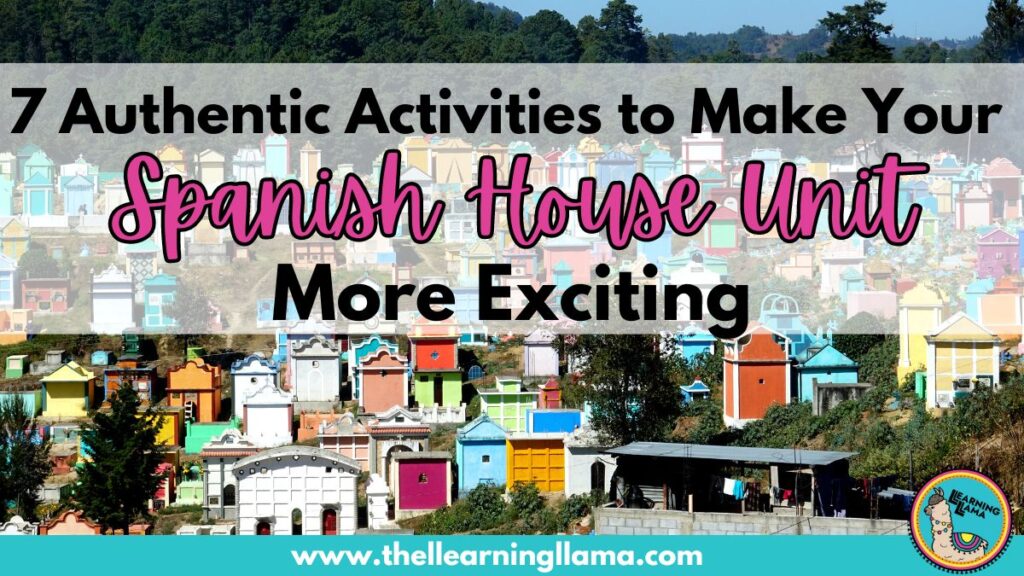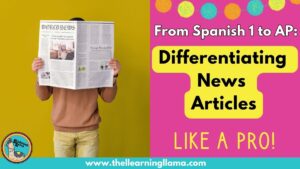I want you to think about your current Spanish House unit. You know, the one where you include the traditional la casa vocabulary, like rooms of the house, furniture, and chores. How exciting are your lesson plans within this unit? How many authentic resources do you use to incorporate culture into your Spanish house unit? For my first few years of teaching a house unit, I can say they were not exciting lesson plans and I lacked authentic resources.
But then, I made some changes to my Spanish house unit. I found resources that would include culture and authentic house listings from around the world. With these 7 authentic activities, your house unit will be transformed into an exciting and relevant learning experience.
Real Estate Listings
The best resources in the language classroom are real, authentic resources. Real estate listings are a perfect example, especially because they are usually concise, bullet-point lists of what each listing has to offer. Even novice students may be able to understand the listing, but if not, you could edit it to include the house vocabulary you have taught.
Show your students three different real estate listings. From there, they could choose which one they prefer and why. This could be a written assignment or an interpersonal task in small groups.
But, before you let them pick which one they like, ask questions about the options. Which house(s) have a pool? Which house would a family prefer? Which house is modern? Etc.
I have an Integrated Performance Assessment that does all of this! Students read two real estate listings (interpretive), then discuss their dream home (interpersonal) and finally write about their choice (presentational).
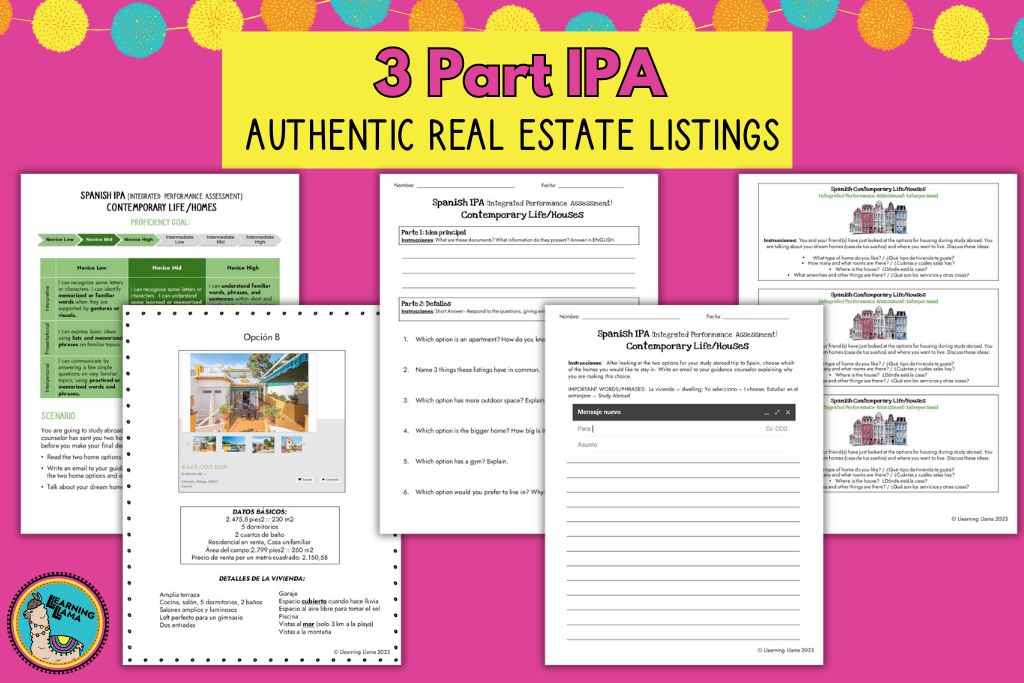
Research a House Abroad
Students can imagine they are moving or traveling abroad. They need to find a house that fits their needs. It is best to provide students with some real estate listing websites. Here are some good ones: Mexico, Spain Peru, Guatemala, and Argentina. You can also search “inmuebles + country of choice” on Google and find lots of sites.
To make this more fun, here are some ideas:
- Option 1: Assign one country to each student, so they are each hunting for houses in different countries.
- Option 2: All students will search for a house or apartment in the same city. But here’s the catch. Give each student a “persona.” Some might be in their 20s, searching for a one-bedroom apartment while another could be a 35-year old with 3 kids and a dog. Then, the people with the same “persona” will compare their choice and explain why they chose it.
Google Earth Peru and Mexico houses
Google Earth has a very cool interactive exhibit called: This is Home. It says “While the countries, cultures and climates may differ, knowing we all have a place to call home is a first step to understanding everything we have in common. Visit traditional homes around the globe and discover how the definition of “home” can both change and remain the same.” There is nothing better than this for developing intercultural competence!
You can tour and read about houses on almost every continent. In the Americas section, students can tour homes in Peru and Mexico. So, I had my students do this, then compare the two types of living accommodations. I absolutely loved “walking” into the Uros reed house! You see the decorations, bed, flooring, etc. Your students will have tons of questions, like where is the bathroom? Do the houses flood? They will be in awe of this way of life!
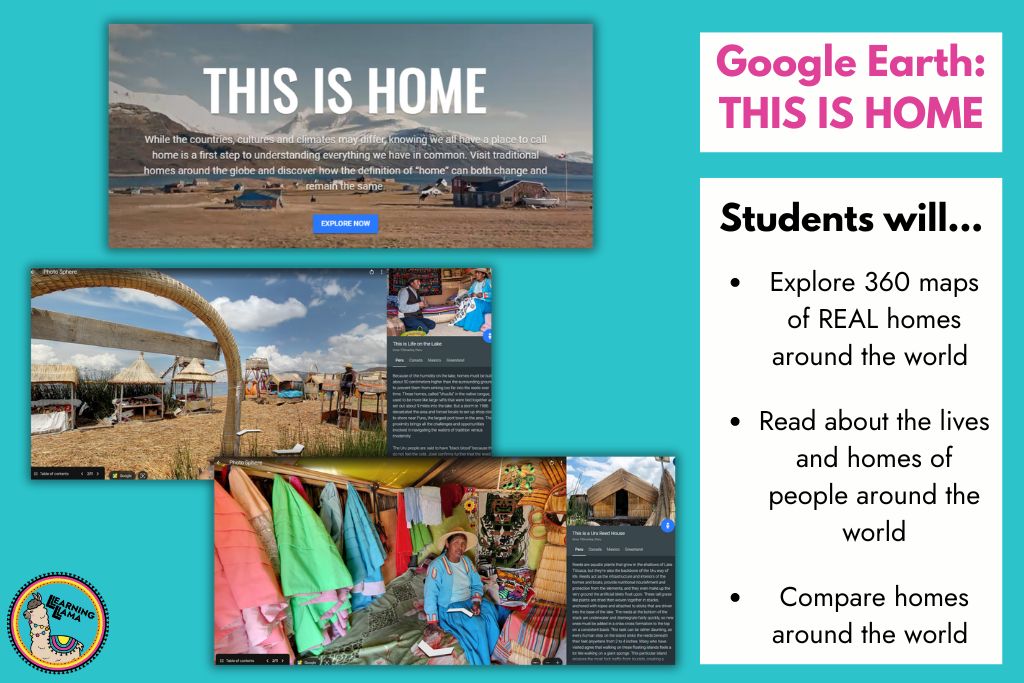
Dream House Project & Conditional Tense
Students love a project where they can dream big! For this assignment, students will design a dream house, including as many details and requirements as you ask of them. The dream house project makes a great final project, and you want to base this off of the vocabulary you have covered during your house unit. For example, you could ask students to include a specific number of rooms, types of furniture, colors, decorations, etc.
For students that have learned the conditional tense, this is a great way to also assess that grammatical concept. Students will describe what their dream house WOULD look like, WOULD have, etc. **If you haven’t taught the conditional tense yet, rather than use this as an assessment, it could be a time to introduce it authentically!
La Casa Azul – Frida Kahlo
One of the most famous houses in Hispanic culture is La Casa Azul, Frida Kahlo’s residence turned museum! I absolutely love using the virtual tour feature of the Casa Azul website during my art unit, but this can also be used for a house unit! The tour takes you through the various rooms in the house, and you get to see the museum as if you are actually there! Students could also compare Frida’s house to their own home, make a real estate listing for Frida’s house, or even complete a fun scavenger hunt trying to find things throughout the museum house! Learn more about how I used this tour to create a virtual field trip and webquest (in Spanish or English) and other Frida Kahlo lessons on this blog post.
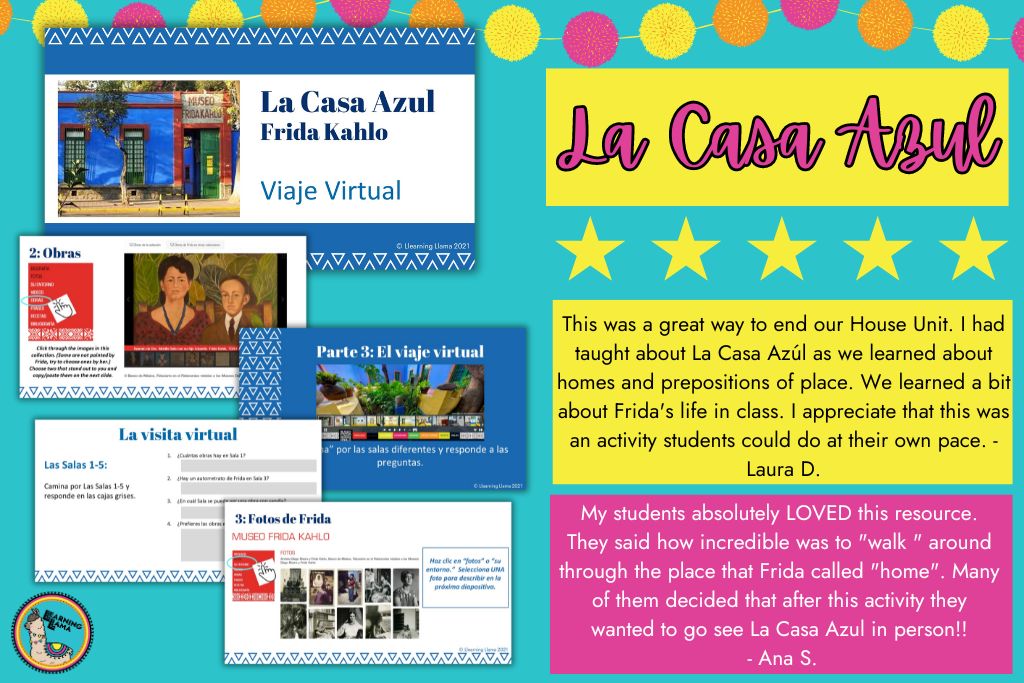
Cultural Lesson: Bedrooms Around the World
What does your bedroom look like? With this lesson, children from around the world answer that question and show a picture of their bedroom. Fair warning – some are living on mattresses outside. It can be quite a culture shock and wakeup call. I created a lesson based on this article from BBC called “Donde duermen los niños.” In the lesson, you’ll get short texts with vocabulary and differentiated options. Students will have discussion questions and a cultural comparison activity to compare these bedrooms to their own room.
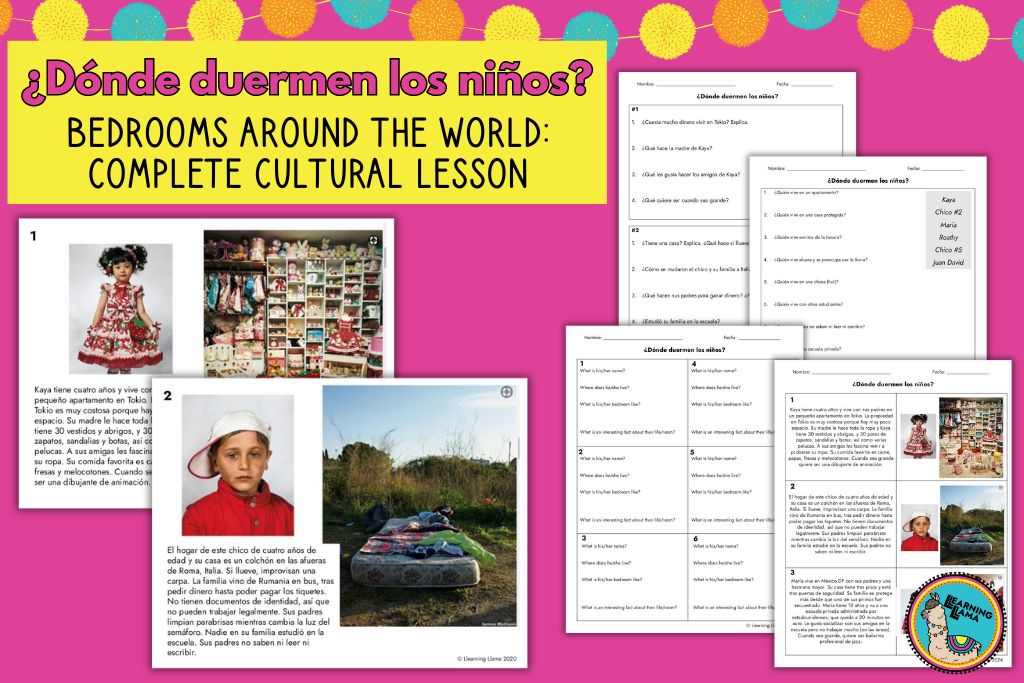
Escape Room
One of my favorite ways to review the content from a unit is with an escape room. With this La casa escape room, students compete in small groups to solve 5 puzzles. Each puzzle is an authentic, fun experience, including activities to Interpret real estate ads and dream home requests, complete a logic puzzle (like Einstein’s riddle), create a chores calendar, compare 2 bedroom pictures and find differences, and categorize objects in the house. Learn more about using and creating escape rooms on my blog post.
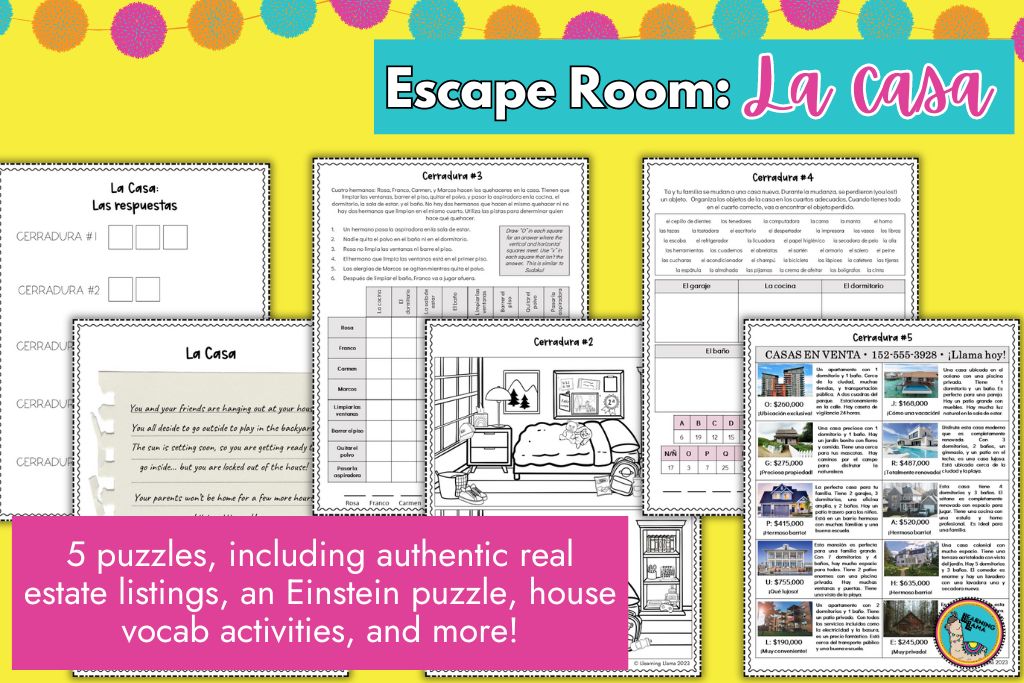
Think about your students. What is more impactful? A basic Spanish lesson with house vocabulary activities or a cultural lesson, incorporating homes from around the world? Try one or more of these authentic activities in a Spanish house unit with your students. Share your favorite activities below!

